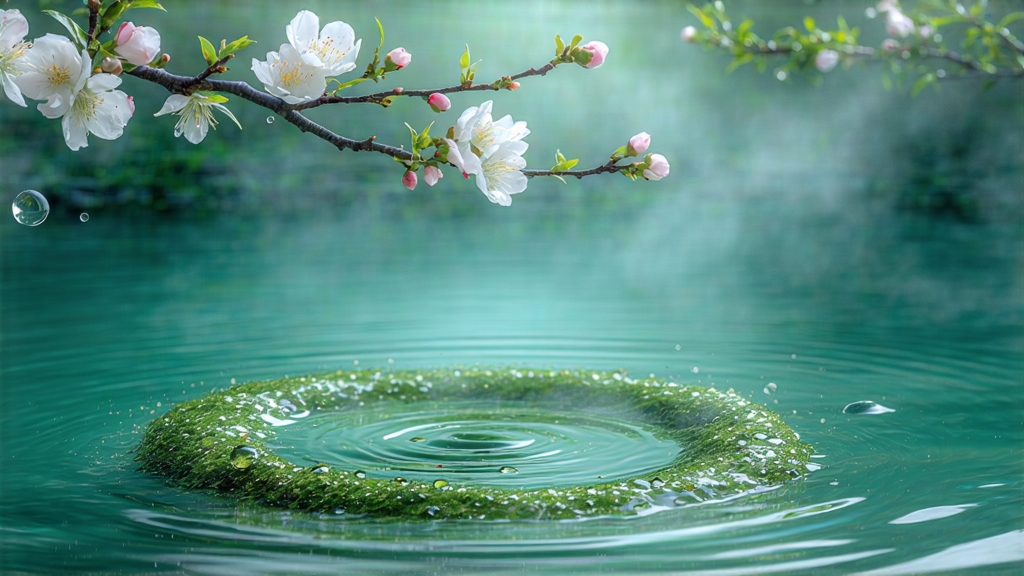
Tucked between the mist-laden hills of Dongting Mountain and the rippling waters of Lake Tai in Jiangsu Province, Biluochun—literally “Green Snail Spring”—has been seducing tea lovers since the late Ming dynasty. Legend claims a nun found the tiny curled leaves so fragrant that she named the tea “Scary Fragrance”; the Kangxi Emperor, enchanted during his 1699 southern tour, rechristened it Biluochun for its snail-shell shape and early-spring harvest. For three centuries the leaf has remained one of China’s ten famous teas, yet outside the Middle Kingdom it is still overshadowed by Dragon Well or Longjing. This article invites the global tea table to discover why Biluochun deserves equal reverence.
Botanically, Biluochun is almost always made from the small-leaf Camellia sinensis var. sinensis cultivar “Fuding Da Bai Hao,” the same strain that yields silver-needle white tea. Grown on granite-derived, slightly acidic soils between 120–300 m elevation, the bushes are interplanted with fruit trees—peach, plum, apricot—whose blossoms drop petals that naturally scent the nascent buds. The microclimate of Lake Tai supplies perpetual fog, filtering sunlight into soft, diffused rays that force the plant to produce more theanine and aromatic volatiles. The result is a leaf that carries both marine umami and orchard sweetness in one sip.
Unlike the wide, flat blades of Dragon Well, Biluochun is defined by its tight spiral, rolled under the palm in a wok heated to exactly 180 °C. Crafting one kilogram requires 60–70 thousand buds plucked before Qingming festival, when the shoot is still a single unfurled leaf and a half-inch stem. The work begins at 5 a.m., when dew still sheaths the garden; pickers wear cotton gloves to avoid fingerprint oils that can scorch in the wok. Once back in the shed, the leaves are spread 2 cm thick on bamboo trays and withered for 4–6 hours until 65 % of their moisture evaporates and the grassy edge subsides.
The kill-green step is a 3-minute waltz between hand and iron. A master fryer tosses 250 g of leaves into a wok polished by decades of use, swirling them clockwise while pressing downward with the heel of the hand to initiate the curl. Temperature is modulated every thirty seconds—first high to halt oxidation, then medium to coax sugars, finally low to set the spiral. The moment the leaf turns jade-green and emits a chestnut aroma, it is rolled: palms form a loose cage, rolling the bud from wrist to fingertip in one fluid motion repeated 300 times. A final gentle bake at 70 °C for forty minutes drops moisture to 5 %, locking in the trademark downy white tips that resemble miniature snail shells.
To brew Biluochun abroad, choose still spring water low in calcium; hard water dulls its magnolia-like perfume. Pre-warm a 200 ml tulip-shaped glass to 80 °C; the narrow waist concentrates aroma while the flared lip cools each sip. Use 3 g of leaf—about two level teaspoons—letting it fall onto the glass bottom. Instead of pouring water directly onto the fragile buds, tilt the glass and let the stream slide down the inner wall, a technique Chinese sommeliers call “glass waterfall.” The first infusion lasts forty seconds; watch the spirals unfurl like green snails awakening from hibernation. Decant completely to prevent stewing; the second steep, at fifty seconds, often delivers the most balanced cup, bridging marine minerality with white-flesh peach sweetness.
Professional cupping follows a five-spectrum matrix: sight, scent, sip, saliva, and sustain. First, examine the dry leaf under 5500 K daylight LED: color should be “sparrow-tongue green” with uniform white down; black edges betray over-firing. Inhale the warm leaf in a pre-heated gaiwan lid; top notes should recall fresh loquat and steamed edamame, never roasted peanut. Upon sipping, roll the liquor across the tongue’s three tasting zones: tip for sweetness, sides for acidity, back for umami. A top-grade Biluochun will trigger a cooling menthol sensation at the throat, what Chinese judges call “ginger flower coolness.” Finally, note sustain: the fourth infusion should still whisper orchard and lake mist, proof of high amino-acid content.
Storage is critical; the curled shape exposes more surface area to oxygen.